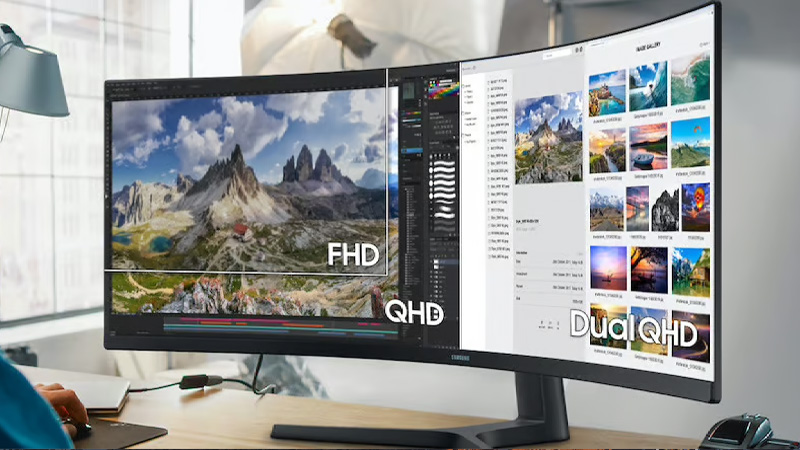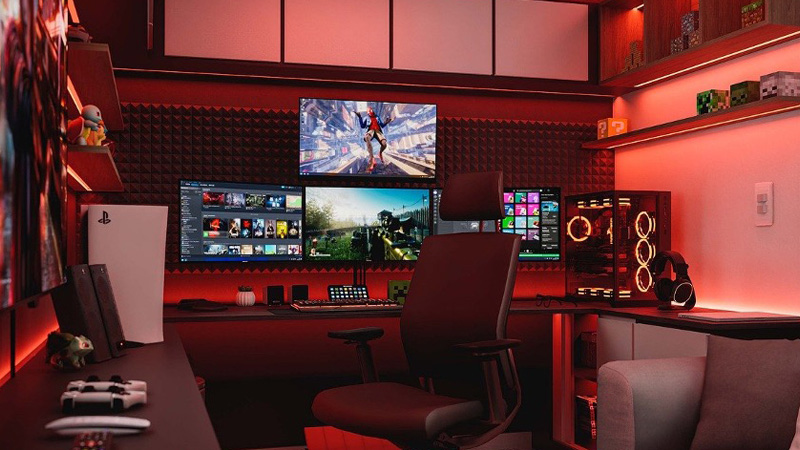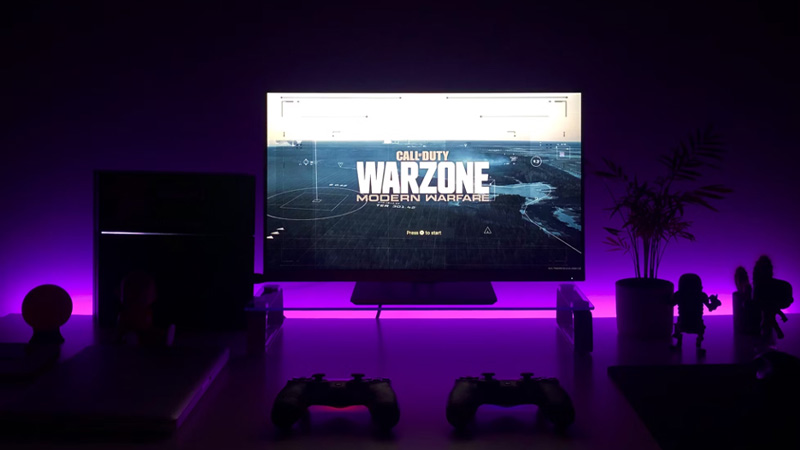
FHD vs. QHD vs. UHD:
Understanding Display Technology
Projector display technology has been undergoing rapid advancement since 2008. Full High-Definition video saw its first introduction that year, marking the start of a technological revolution. Since then, we have seen the introduction of Quad-High-Definition and Ultra-High-Definition televisions. When you’re shopping for a new home or office projector, knowing what each has to offer will help you make an informed choice.
1. Understanding The Display Technology
2. Introducing FHD – The Definition That Started It All
3. Quad High Definition: Display Technologies Current Middle Child
4. Ultra-High Resolution: The Rising Star of High Definition
5. Finding the Right Definition for Your Experience
6. Need Help Selecting the Definition That Will Deliver?
1. Understanding The Display Technology
In the simplest terms, Full High Definition, Quad High Definition, and Ultra High Definition merely refer to different levels of resolutions. Each one specifies a certain number of vertical and horizontal pixels that can be found in displays with these designations. Determining which one will be right for you will be determined based on several factors, including:
● Price Point: As you move up the scale from FHD to UHD, you’re going to find the price of the projectors is going to increase with them.
● Current System: Another factor is whether your current system will be able to support the demands of the display. Without supporting hardware, the results from higher-resolution displays are’t going to be as noticeable.
● Desired Results: If resolution is’t a high requirement for your intended use, then UHD or even QHD may be more than you need. On the other hand, if you want to ensure dazzling, crystal-clear displays, then investing in a higher resolution may make sense.

2. Introducing FHD - The Definition That Started It All
First introduced in 2008, Full High Definition (FHD) has grown to become the default resolution for many projectors displays. With 1,920 horizontal pixels and 1,080 verticals, this definition presents a clear image that isn’t lacking in detail. The 1,080 vertical pixels led to FHD also being referred to as 1,080p.
Reasons To Get an FHD Display:
● Affordability: As the most common definition on the market, it’s also the most affordable for budget-conscious consumers.
● Compatibility: This definition is the standard, and as such is almost universally compatible with a wide range of devices and platforms. This makes it easy to plug and play for gaming, watching movies, or on your desktop.
● Low Energy Costs: Finally, these devices are less demanding on your power bill than higher-resolution devices. This is a result both of having fewer pixels overall, and of technological development over nearly two decades.
Why To Avoid FHD Displays:
● Limited Detail: While more than enough for most applications, those requiring high levels of detail and visual clarity suffer. Those doing photo or video editing, especially on a professional level, may not get the performance they need out of FHD.
● Aging Technology: FHD is the current standard in the industry, which is by virtue of being well-established enough to nearly be universal. Unfortunately, this also means it’s aging tech, and QHD and UHD are steadily moving in to take its place. As a result, FHD may not be able to take advantage of the latest advances in display technology.

3. Quad High Definition: Display Technologies Current Middle Child
The term Quad High Definition, QHD, comes from the number of pixels found on the display. It has four times the resolution of the generation that preceded FHD, the 720p. It’s a remarkable step up from that technology, and even from the FHD. With 2,560 horizontal pixels and 1,440 pixels, (1440p) it nearly doubles the total pixels of FHD. This results in a clearer, crisp visual experience in any application.
Reasons to Get A QHD Display:
● Improved Sharpness: The viewing experience with a QHD display is noticeably superior to that with FHD. If you’re looking for greater detail and beautiful clarity in your display, it’s a great choice.
● Better Use Of Space: One side-effect of providing an incredibly crisp image is the ability to run more applications in the same space. The improved clarity of the display means text will be clearer, making it easier to take full advantage of your screen real estate.
● Improving Price Points: As QHD displays see greater use, their price continues to drop accordingly. If you’re looking to upgrade your display, but aren’t ready for high-dollar investments, QHD can be a great compromise.
Why To Avoid QHD Displays:
● Higher Pricing: While the prices of QHD displays are coming down, they still can come quite dear. The pricing can vary significantly from brand to brand, so careful shopping may help.
● Higher System Requirements: Quad high-definition displays require hardware that can deliver the media at a rate that it can properly utilize. Graphics cards, consoles, and other media sources capable of this can increase the cost irrespective of the unit itself.
● Higher Energy Costs: As mentioned above in FHD, energy costs increase as pixel count increases. In addition, the internal hardware of QHD displays often requires greater wattages to drive the display.

4. Ultra-High Resolution: The Rising Star of High Definition
While not quite bleeding edge, Ultra High Resolution is the highest definition display currently available on the common market. Also known as a 4k display, it has a 3,840 horizontal spread and 2,160 vertical spreads of pixels. This display is highly sought after by those with the means and delivers a visual experience unparalleled by other market choices.
Reasons to Get A UHD Display:
● Unparalleled Visual Experience: UHD brings media to life with incredible clarity and depth of detail. If you work with video or photo editing or are just a videophile who wants the best viewing experience possible, UHD is for you.
● Immersive Gaming: There’s nothing that immerses your gaming experience like crystal clear imagery, stutter less refresh rates, and eye-popping color. For those who want to catch every detail of the worlds they visit, UHD is the holy grail of gaming.
Why To Avoid UHD Displays:
● Quality Comes Dear: When you want the industry’s premier display experience, you need to be prepared for premium prices. UHD displays are very near the bleeding edge of high-resolution technology, and it shows in the unit prices.
● Bleeding Edge Tech Requirements: The demands of UHD displays are high in terms of the technology needed to drive them. Only cutting-edge devices, consoles, and graphics cards can deliver the kind of performance needed to get the most out of them. This may mean an upgrade is in order along with the unit itself.
● Early Adoption Means Less Options: Currently the amount of content that supports 4k displays is relatively minimal. Their recent introduction into the industry means that haven’t developers.

5. Finding the Right Definition for Your Experience
In addition to the above considerations, the real driving point behind your decision is going to be the experience you want to deliver.
Gaming Displays
If you’re looking for a cutting-edge gaming experience, then you’re going to lean into a higher-resolution display device. You’ll need to determine what your device can support unless you’re future proofing against later upgrades. Otherwise, you may find yourself with more display than your machine can handle.
As an example, those who are deeply into retro games aren’t going to need the sheer power QHD and UHD can deliver. On the other hand, if you’re looking to experience every detail of the latest UHD-ready games, you’re going to need the best the market has to offer. Ultimately, it may be best to settle for the affordability and power balances in a QHD offering.
High Definition in The Workplace
Selecting a proper definition for the workplace isn’t as simple as for a gaming experience. Here you’ll need to consider what the needs of the business are in the short and long term. This will need to be balanced against the budgetary restrictions, and the cost of upgrading in the future versus investing now.
Businesses that primarily use their displays for connecting with clients and coworkers may find that UHD is simply beyond what they need. These meetings and connections are often perfectly supported using QHD or even FHD displays.
However, when presentations and business meetings are central to the business’s use, UHD is a solid investment. This will ensure that every detail of the presentation is visible in a professional, polished, crystal-clear display.
It’s always tempting to invest in the latest technology available, but it’s not always the right time. Prices on UHD displays will drop in price as the technology becomes more widely accepted. Additionally, the cost of associated hardware and software that supports these incredible displays will drop with them. It’s all about balancing performance against immediate need.
LEDSINO offers an exceptional range of devices that can meet just about any need. For instance, our Indoor LED Display SA-640-Series offers a great video experience for just about any indoor application. With vibrant colors, rapid refresh rates, and great expandability you’ll be able to create exactly the experience you’re craving.

6. Need Help Selecting the Definition That Will Deliver?
There’s no reason to worry over the details of this decision on your own. Our team is deeply connected to the display industry. They understand how important this decision can be for private owners and businesses alike.
You can call today to connect with our experts who will walk you through the details of your display needs. They’ll take your goals, timetable, and price point into consideration and help you select a display device that will last you for years to come.